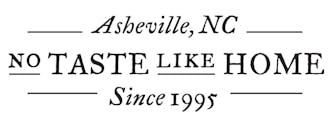Meeting your edible ‘neighbors’ is just the first step toward learning to enjoy wild food. This service is for educational purposes only and does NOT mean you can eat anything we have labeled. We do not recommend eating any wild foods without first consulting an expert in person. We tag not only edibles but medicinal and toxic species as well, so please read all details here before venturing out to your “yarden!”
- Green tape indicates an edible wild food (when properly gathered and prepared, see details below).
- Red tape indicates a toxic plant or fungus.
- Orange flags or tape may have been used to help you find your way to any hard-to-find plants and fungi.
- If we found multiple examples of an edible, you may see it listed on the map with a decimal (eg: if chickweed is labeled with a 6, 6.1 and 6.2 will be other patches of chickweed).
To safely eat wild food, you need to know the who, what, where, when, and how of each edible.
WHO: having something labeled as edible doesn’t mean that anything else that looks like it is the same thing, even if it is right next to it. Until you’ve gotten to know plants or mushrooms, anything can “look alike.” This is especially true across the season, since plants and mushrooms can look vastly different through their lifespan, which can be as short as a few days.
WHAT: what part of the plant can you eat? Many edibles are only partly edible. For example, the flowers may be edible while the leaves are toxic.
WHERE: are these plants or fungi growing in a contaminated spot – such as near a building or road or in landscaping that has been sprayed?
WHEN: edibles are not necessarily edible year-round. The same parts of poke, for example, are edible when very young and subsequently toxic.
HOW: many edibles are toxic raw and need to be cooked thoroughly before consuming. Morels, for example, are edible when cooked but are otherwise toxic, even potentially deadly.
Finally, how much is safe to eat? Many edibles are only edible in moderation, and excessive amounts can be toxic.
We hope getting to know a few of your landmates helps you feel in good company at home! Note that this survey is not comprehensive – there are likely many more edibles on your property and toxic species as well. If you would like a more complete assessment of your property, contact us.
